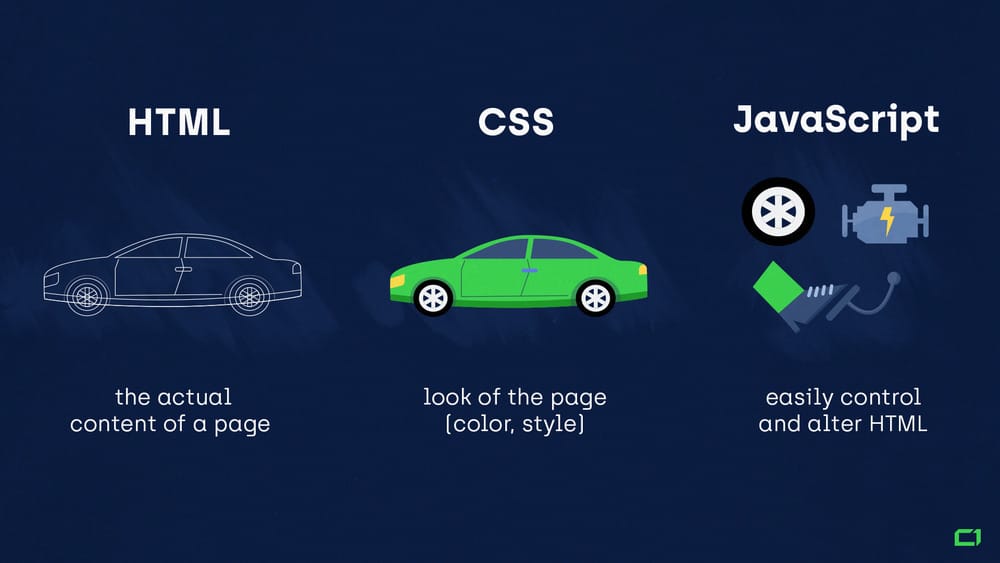What is JavaScript and its relationship to HTML and CSS?
JavaScript, HTML, and CSS can be represented as the essential components of a car. If you imagine how a car is built, HTML would be the chassis, which provides the basic structures and framework. CSS would be in charge of the painting and upholstery, which adds style and the visual appearance of a car. On the other hand, JavaScript would be considered like an engine. It would power the car and be able to be driven by people. Without JavaScript, the car would be a static 3D model on display with no functionality. The three elements of HTML, CSS and JavaScript work together to create a fully functional website, just like how the chassis, styles, and engine come together to make a complete and functional car.

What is control flow and loops?
In JavaScript, control flow refers to the sequential order in which code is executed. A great example would be the steps in making a cup of hot chocolate. You would first heat the milk, pour in the cocoa powder, then mix it up with a spoon.
Loops refer to repeating the process until a certain condition is met or until the task has been completed. When making hot chocolate, loops would be like tasting the hot chocolate, adding more cocoa powder and repeating this process until you are satisfied!
What is the DOM?
The DOM stands for 'Document Object Model'. It is an interface provided by web browsers that represent the structure and content of an HTML or XML document like a tree-like model of objects. The DOM can be accessed via Javascript in order to find any element of an HTML by searching for their elements. Typically, the DOM is used to modify, add, remove elements or change styles within a webpage depending on the interaction of the webpage user.
For example, if we were wanting to add interactions to a webpage button when double clicked, we need to access the DOM via JavaScript. JavaScript has built-in methods and properties that allow us to choose what interactions appear on a webpage. When JavaScript code is executed within a web page, it has direct access to the global document object, which represents the DOM. This object serves as an interface for interacting with the structure and content of the webpage.
What are the differences between accessing data from arrays and objects?
In JavaScript, accessing data from arrays and objects differs in syntax and structure.
Arrays use numerical indices to access elements and the first element has an index of 0. Data from an array can be accessed by using inputting the index of which element you want in a square bracket notation after the array's name.
On the other hand, objects use a string or symbol in order to access the data. You can either use a dot notation or a square bracket notation. The syntax would be the name of the array followed by the method and property name.
What are functions and why are they helpful?
In JavaScript, functions play an important role when it comes to code organization and reusability. They serve as reusable blocks of code that are given specific tasks to complete. Functions can accept input values called parameters and can also return a value as output. The best thing about functions is that it can be executed multiple times, which helps developers to avoid repetitive code.